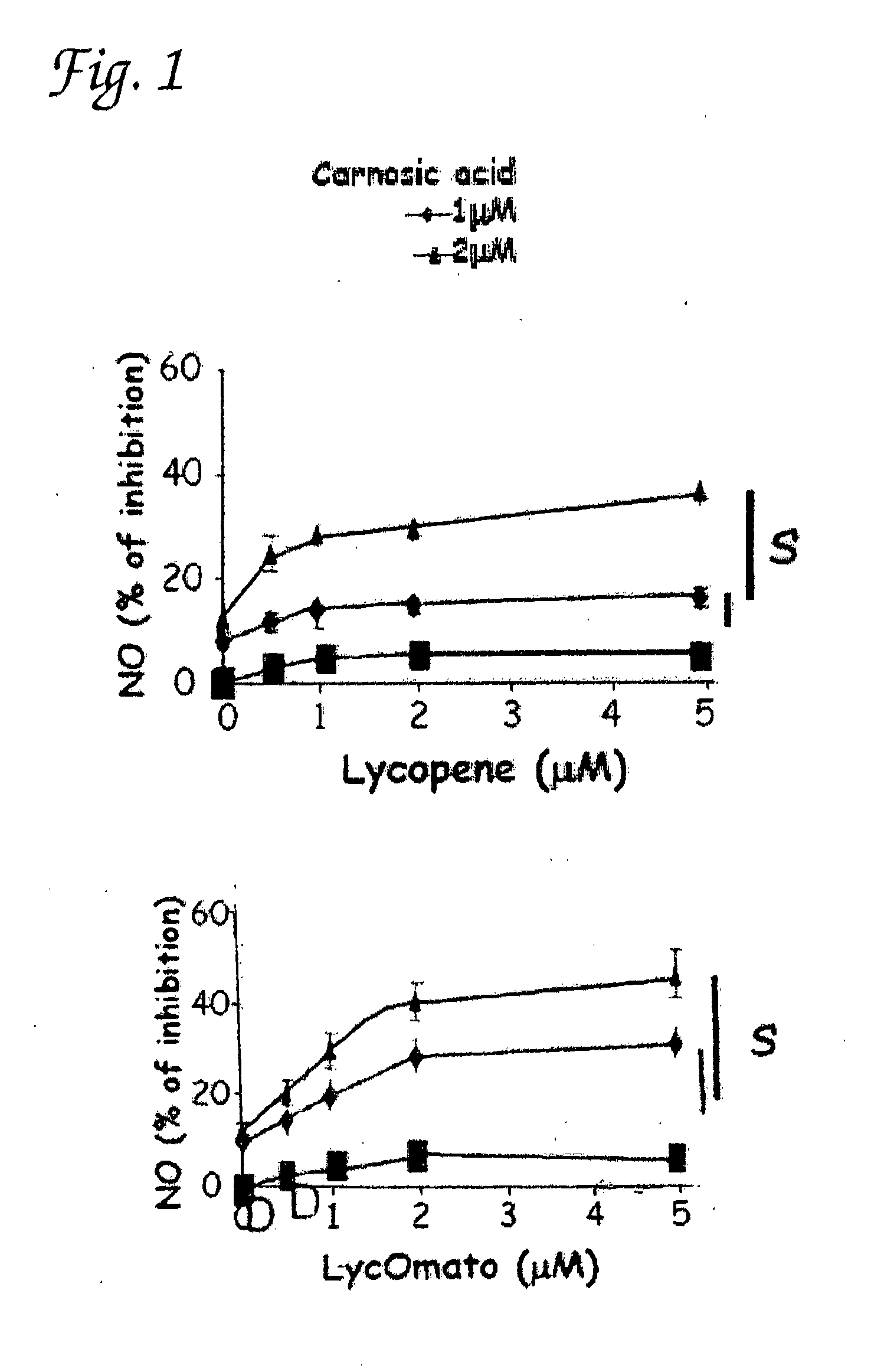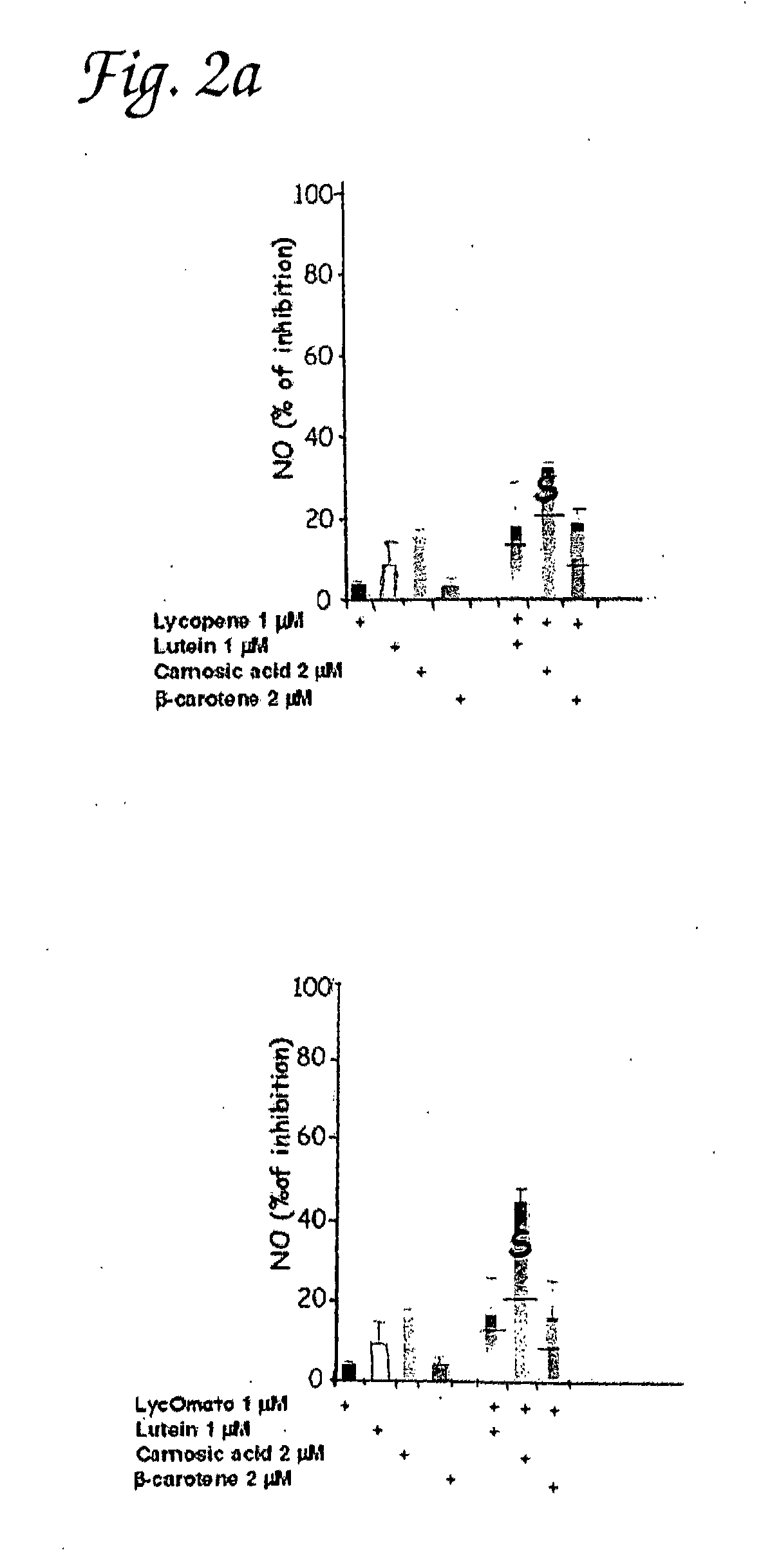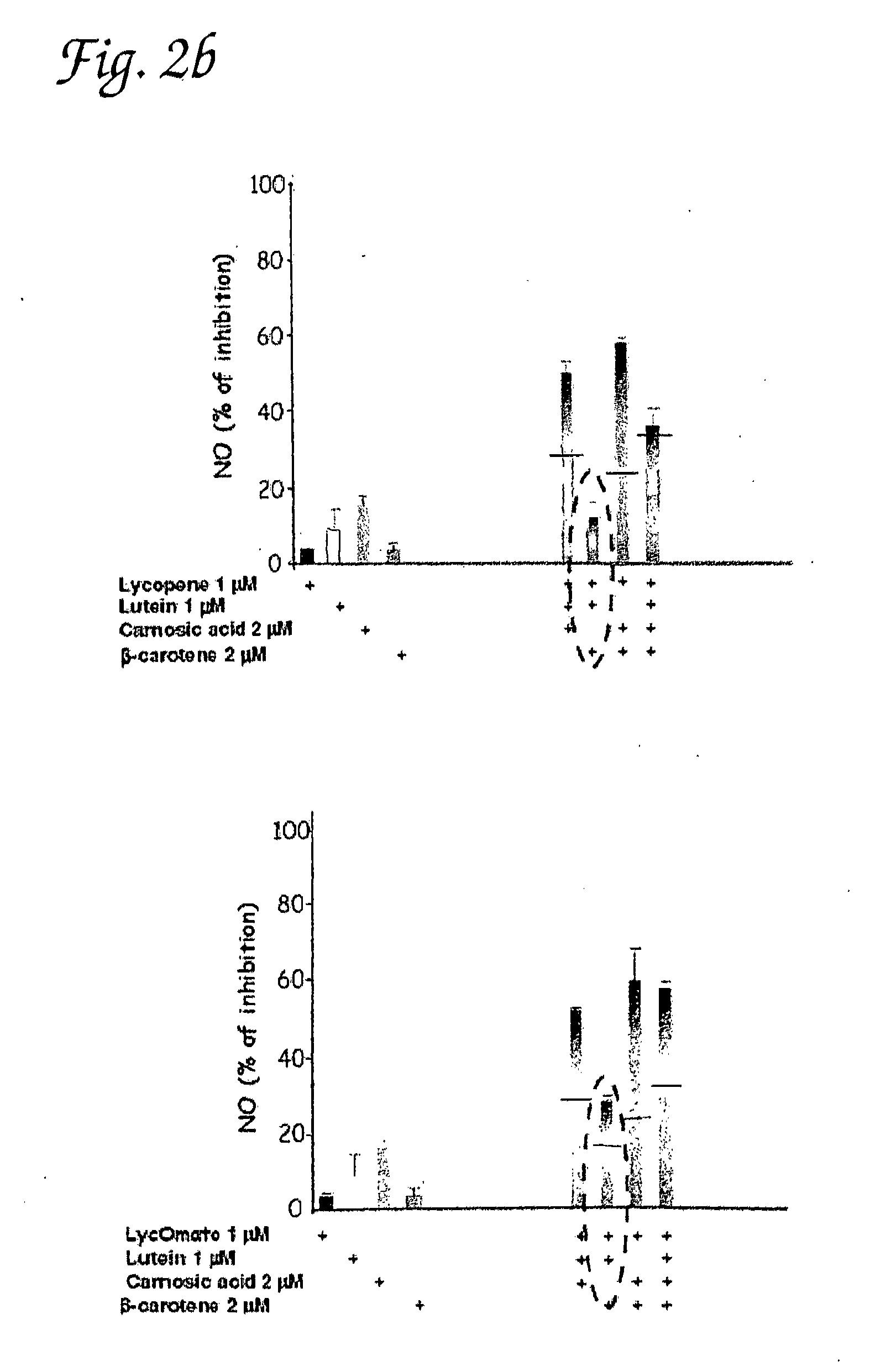Synergistic combinations of cartonoids and polyphenols
a technology of carotenoids and polyphenols, applied in the field of synergistic combinations of polyphenols and carotenoids, can solve the problems of low efficacy and potency of many natural products with no inhibitors, extensive host tissue damage, and harm to the host, and achieves a significant increase in synergistic effect and enhance inhibitory
- Summary
- Abstract
- Description
- Claims
- Application Information
AI Technical Summary
Benefits of technology
Problems solved by technology
Method used
Image
Examples
example 1
Inhibition of Production of NO, TNF-Alpha and PGE2 in Peritoneal Macrophages by Various Combinations of Carnosic Acid, Lutein, Lycopene and Beta-Carotene
Methods and Materials:
[0105]Macrophage isolation and cell culture—Peritoneal macrophages were collected from the peritoneal cavity of 6-8 week old male ICR mice (Harlan, Israel) that had been given an intraperitoneal injection of 1.5 ml of thioglycollate broth (4%) 4 days before harvest. Peritoneal macrophages were washed three times with PBS and, if needed, a hypotonic lysis of erythrocytes was performed, yielding 90-95% purity. The macrophages were identified by FACS analysis using FITC-conjugated rat anti-mouse F4 / 80 (MCA497F) (Serotec, Oxford, England) by flow microfluorimetry on FACS (Becton Dickinson, Mountain View, Calif.). For each sample, 10,000 light scatter-gated viable cells were analyzed. Peritoneal macrophages and murine macrophage cell line RAW264.7 were cultured RPMI 1640 medium containing 10% FCS, 2 mM L-glutamine; ...
example 2
Inhibition of LPS-Induced NO Production in Peritoneal Macrophages by Various Combinations of Lutein, Lycopene and a Polyphenol Selected from the Group Consisting of Carnosic Acid, Gallic Acid, Resveratrol and Quercetin
Methods and Materials:
[0159]Macrophage isolation and cell culture—Peritoneal macrophages were collected and cultured as described in Example 1, hereinabove.
[0160]Preparation of Test Agents—Lycopene and Lutein were dissolved in DMSO (the volume of DMSO in the test solution did not exceed 0.04%). The mixture was vortexed and shaken at 37° C. for 10 min and sonicated in a sonicator bath for 15 sec×3 times. From this stock solution the desired concentrations were reached by addition of appropriate volumes to warm culture medium. The concentration in the solution was calculated to 1 ml of the highest final concentration 0.5 ml isopropanol+1.5 ml hexane / dichloromethane (1:5 V / V) containing 0.025% BHT. The solution was vortexed and the phases were separated by centrifugation ...
example 3
Inhibition of LPS Induced Superoxide Production in Macrophages by Various Combinations of Lycopene or Lyc-β-Mato, Lutein, Beta-Carotene and Carnosic Acid
Methods and Materials:
[0169]Macrophage isolation: Peritoneal macrophages were isolated and treated as described hereinabove in Example 1.
[0170]Superoxide production: The production of superoxide anion (O2−) by macrophages was measured as the superoxide dismutase-inhibitable reduction of ferricytochrome c by the microtiter plate technique, as known in the prior art. An aliquot of radiolabelled macrophages (5×105 cells / well) used for the adherence assay was taken and suspended in 100 μl incubation medium containing ferricytochrome c (150 mM). Stimulation was induced with PMA (50 ng / ml). The reduction of ferricytochrome c was followed by a change of absorbance at 550 nm at 2 min intervals for 30 min on a Thermomax Microplate Reader (Molecular Devices, Melno Park, Calif., USA). The maximal rates of superoxide generation were determined ...
PUM
| Property | Measurement | Unit |
|---|---|---|
| time | aaaaa | aaaaa |
| time | aaaaa | aaaaa |
| pH | aaaaa | aaaaa |
Abstract
Description
Claims
Application Information
 Login to View More
Login to View More - R&D
- Intellectual Property
- Life Sciences
- Materials
- Tech Scout
- Unparalleled Data Quality
- Higher Quality Content
- 60% Fewer Hallucinations
Browse by: Latest US Patents, China's latest patents, Technical Efficacy Thesaurus, Application Domain, Technology Topic, Popular Technical Reports.
© 2025 PatSnap. All rights reserved.Legal|Privacy policy|Modern Slavery Act Transparency Statement|Sitemap|About US| Contact US: help@patsnap.com



